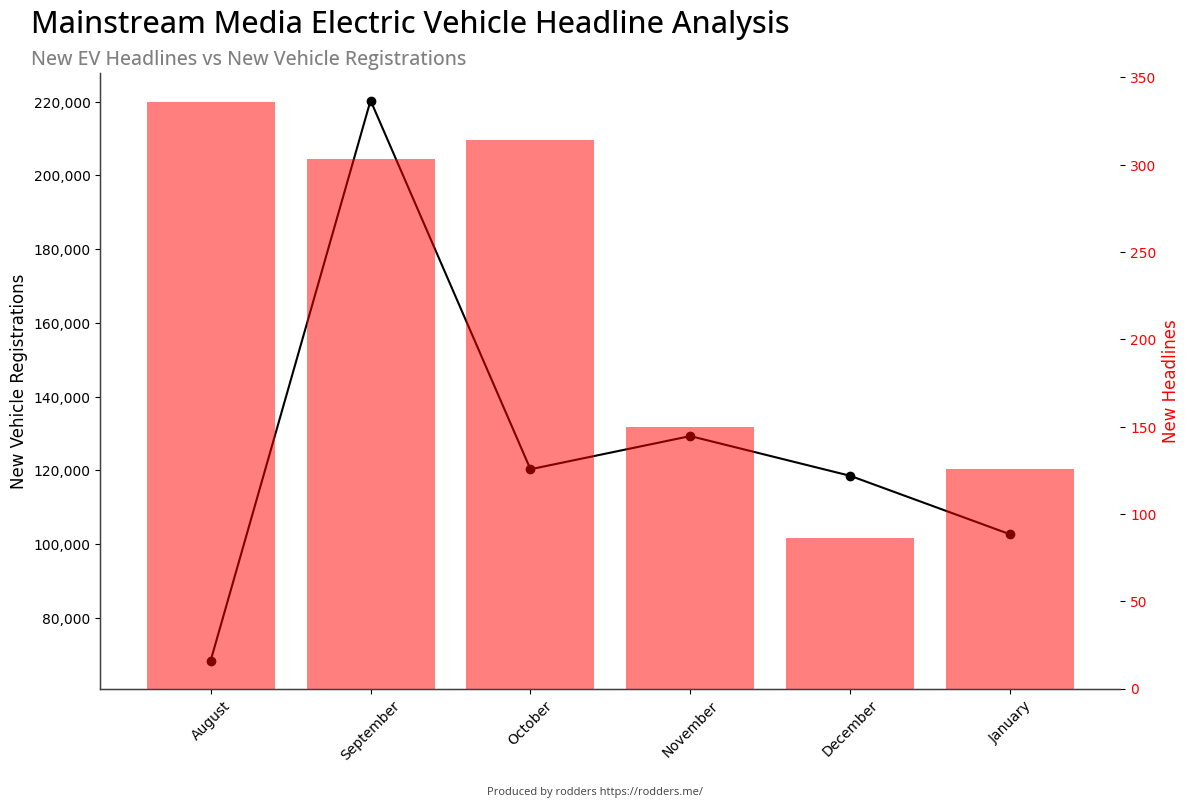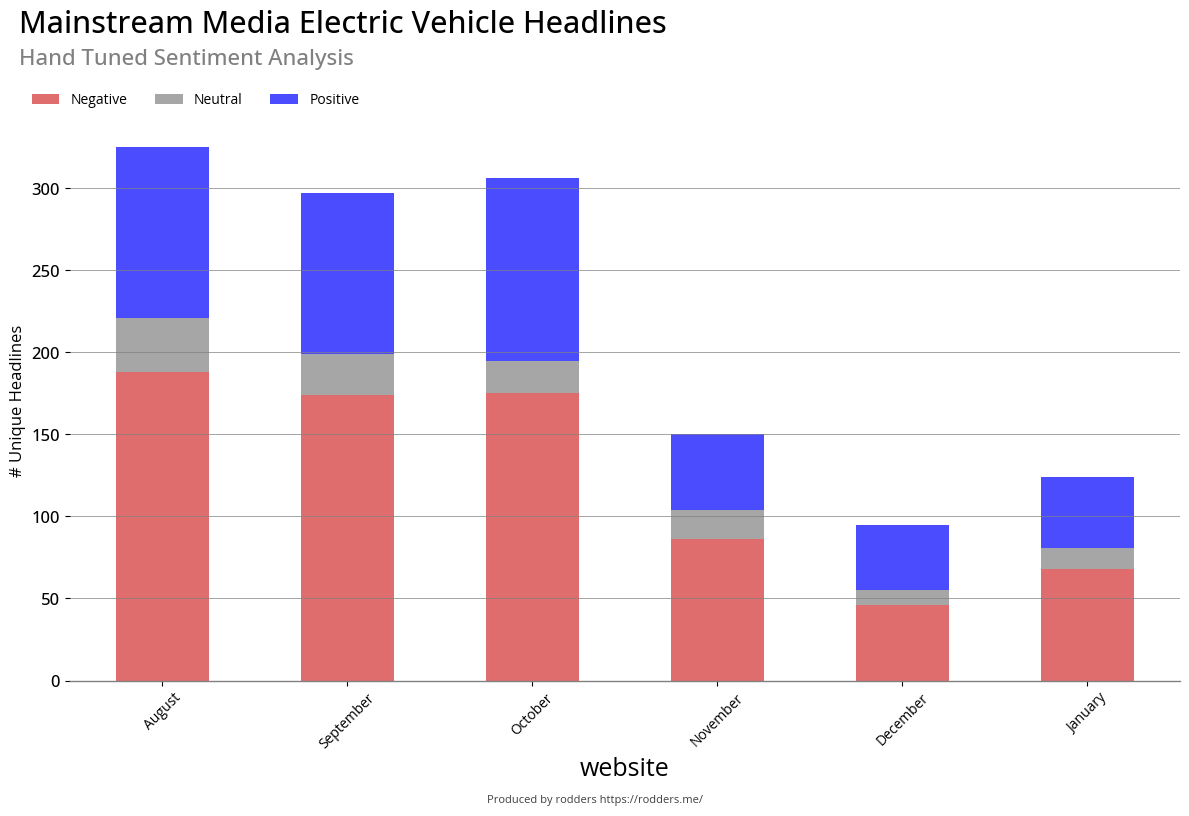Analysing Mainstream Media Headlines for Electric Vehicles
Jump to section
Headline Timing
Last Updated: Wednesday, August 28, 2024 10:39 AM - Data up to Sunday, 28 January, 2024
New Vehicle Sales in the UK: A Peak-Period Analysis
In the UK, new vehicle sales reach their zenith during two key periods: September and March, driven by consumer demand and strategic factors. These peak times are crucial for the automotive market, with a notable increase in vehicle registrations.
This study delves into the relationship between new vehicle sales, the timing of EV related headlines and the sentiment of the headlines in mainstream UK media. By analysing headlines from various online sources, the research identifies a distinct rise in the number of Electric Vehicle (EV)-focused headlines during peak sales months. More importantly, this surge reveals a clear bias in certain publications, where the negative sentiment towards EVs becomes particularly pronounced.
Contrary to what might be expected, the analysis reveals that certain mainstream media outlets in the UK exhibit a strong anti-electric vehicle bias during peak sales periods. Specifically, publications such as The Spectator, The Sun, and others significantly increase their EV headline production around August-October, coinciding with the peak demand for new electric vehicles.
New Headlines Increases during Peak Sales

Top
Anti-Electric Vehicle Bias Intensifies During Peak Sales
The analysis highlights a significant trend: during these periods, it becomes apparent that certain media outlets have an inherent bias against electric vehicles. This is particularly concerning given the significant impact that mainstream media can have on consumer perceptions and purchasing decisions. The surge in anti-electric vehicle headlines can create a distorted picture of the market, potentially influencing consumers to make uninformed choices.

Implications for Automotive Industry Stakeholders
These findings carry substantial implications for the automotive sector. Manufacturers, dealerships, charger installers and marketers must recognise that peak sales periods coincide with an increase in biased media coverage, particularly against EVs. This awareness is critical for crafting counter-narratives, targeting marketing strategies, and adjusting production schedules to maintain consumer confidence and capitalize on heightened demand.
Publication Visualisations: A Deeper Insight into Bias
To illustrate these trends, visualisations for each publication have been included in the Publication Visualisations section of this report. These plots not only showcase the timing and sentiment of headlines but also incorporate Media Bias Fact Check ratings, offering a clearer view of how media bias correlates with peak sales periods for new vehicles.
Conclusion
The correlation between peak vehicle sales periods and a surge in headline publication in mainstream media, particularly with an anti-EV bias, is clear. The period from August to October sees a significant increase in negative EV coverage, which coincides with the highest demand for these vehicles.
For industry stakeholders, understanding this media landscape is vital. Recognising the potential impact of biased reporting during peak sales periods allows for more informed decision-making and strategic planning. As the automotive industry evolves, particularly with the growing focus on EVs, staying ahead of these media trends will be crucial for sustaining a competitive edge.